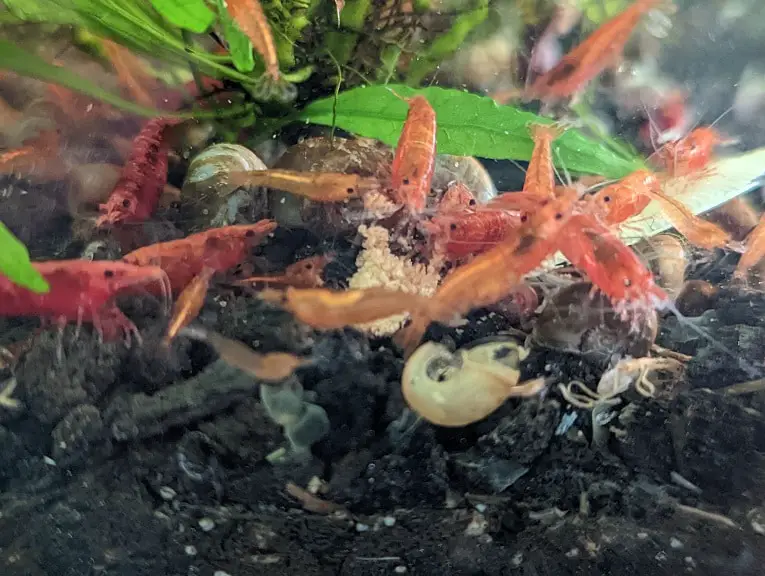When adding Cherry Shrimps to your tank, you will most likely add more than one. So, is this species, also known as the Neocaridina Shrimp, capable of schooling or shoaling in groups? You can find out in this article from Aquarium Blueprints.
Are Cherry Shrimps capable of schooling?
Based on our experience, Neocaridinas aren’t capable of schooling as they don’t swim together or explore in synchronization. Instead, individuals will move around on their own.
With that said, we did notice that in the past our male shrimps will swim against the current made by the output nozzle of our canister filter. This is most likely due to a freshly molted female as the males could have been looking to mate.
Once we switched out our canister filter for a sponge filter, however, this schooling-like behavior stopped completely as the males will end up swimming around asynchronously looking to mate with a female.
Are Cherry Shrimps capable of shoaling?
Instead of schooling, our Cherry Shrimps prefer to shoal. You will most likely see this behavior when you drop food into your aquarium as these inverts will quickly converse in order to get a piece of the meal.

If you are keeping your shrimps in a community tank, your Cherries will most likely stick together as well. This is because the Neocaridinas may view the fish as predators. So, in order to increase their chances of survival, they will hide in the same areas as their companions.
In general, we recommend that you keep shrimps in their own tanks or in an aquarium where the only tank mates are the slow and harmless snails. We used to keep our Red Cherry Shrimps in a community tank with guppies, platies and rasboras. While our fish left the shrimps alone in the beginning, they eventually started attacking the inverts.
When we tried raising Cherries again, we put them in a tank with Ramshorn Snails. As a result, both the shrimps and snails were able to thrive in the same aquarium.

As we stated above, males will often swim around looking for freshly molted females in order to mate. You may be able to see this behavior shortly after a water change as different water temperature and parameters may force the shrimps to molt out of their current shells.
